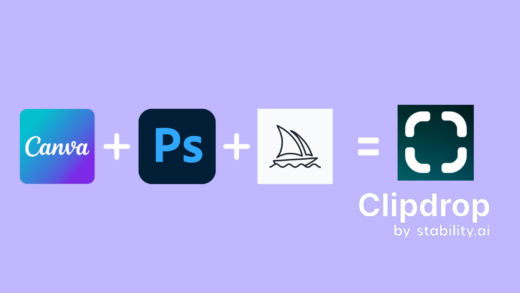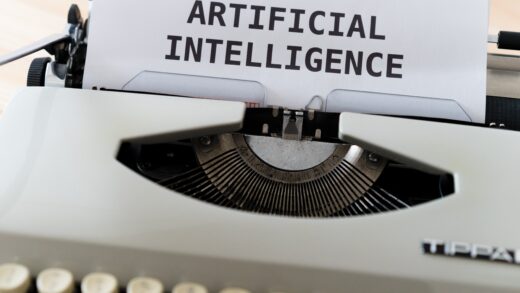In a world where technology has come a long way, meet Alex, a tech enthusiast always on the lookout for the next cool thing that could shape the future. One day, Alex stumbles upon a news article promising to unveil a new paradigm in the digital realm—Web3.
The article sparks a fire of curiosity within Alex, igniting a desire to understand what this mysterious term means. What lies beyond the centralized systems and corporate dominance of the current internet? With determination in their heart and a thirst for knowledge, Alex embarks on a journey into the decentralized frontier of Web3.
Little does Alex know that this journey will not only unravel the intricacies of Web3 but also challenge their perception of the internet and its potential for transformative change. Along the way, they will encounter individuals who will guide them through the complex web of blockchain, smart contracts, decentralized applications, and more.
So, come along with Alex as they venture into the unknown, seeking answers to fundamental questions: What is Web3? How does it differ from the current web? And most importantly, what possibilities does it hold for a future where power and control are distributed back to the hands of individuals?
In this tale of discovery, innovation, and technological revolution, we invite you to explore the uncharted territories of Web3 alongside Alex—a journey that will forever change their perspective on the digital landscape and the limitless possibilities that lie ahead…
Fasten your belts, we are moving fast.

AI Summary
Web3 is a decentralized and user-centric network that uses blockchain, smart contracts, and decentralized applications (dApps) to provide transparency, security, and community governance. It has the potential to revolutionize traditional financial systems through decentralized finance (DeFi) and empower individuals through decentralized autonomous organizations (DAOs). However, Web3 faces challenges such as scalability, user experience, regulatory frameworks, and interoperability. Despite these challenges, the possibilities of a decentralized and inclusive internet make it worth the effort.
The Curiosity Ignited:
As Alex leisurely scrolls through the Social Media, a post catches their eye with a headline boldly proclaiming “The arrival of Web3, the next evolution of the internet. Intrigued by the promises of a digital revolution, Alex delves into the article, absorbing every word with increasing fascination.
The article paints a picture of a decentralized internet, where power is wrested away from giant corporations and placed back into the hands of individuals. It speaks of a new era where data privacy is no longer a luxury but a fundamental right, where trust is woven into the fabric of online interactions, and where innovation flourishes beyond the limitations of the current centralized web.
The possibilities outlined in the article are captivating. Immutable ledgers ensure transparent transactions, smart contracts automate agreements without intermediaries and decentralized applications (dApps) provide services that cannot be censored or controlled by any central authority.

Excited and curious, Alex wonders how Web3 differs from the internet they know, how it works, and how it can bring profound changes to the online landscape. They spend countless hours researching online forums, whitepapers, and educational resources to understand the underlying concepts driving this technological revolution.
Alex seeks guidance from experts, attends conferences and meetups, and connects with like-minded individuals who share their enthusiasm for a decentralized future. With each interaction, their understanding expands, and they realize that Web3 is a paradigm shift—an opportunity to reshape the internet, reestablish trust, and empower individuals like never before.
Armed with newfound knowledge and burning curiosity, Alex ventures further into Web3 to uncover its secrets. This journey will not only shape their understanding of technology but also transform their perception of the world and their place within it.
The Building Blocks of Web3
So Alex is on a mission to learn more about Web3 and they come across Sarah, a cool blockchain developer. Seeing how excited Alex is, Sarah decides to take them under her wing and teach them all about the intricate world of Web3.
Sarah introduces Alex to the foundation of Web3—blockchain tech. She explains that blockchain is a super secure and transparent ledger that’s stored across a network of computers. This makes sure that everything is legit and on the up and up.

Sarah lets Alex in on the awesomeness of smart contracts. These are like agreements that can execute themselves, all thanks to blockchain. With smart contracts, you don’t need anyone else to make sure everything’s going according to plan.
Sarah also introduces Alex to dApps. These are like apps that are built on blockchain platforms and don’t need any central authority to run. They do all sorts of cool things, from finance and gaming to governance and social media.
As everything starts to come together, Alex gets a real grasp of the building blocks of Web3. They can see how blockchain, smart contracts, and dApps are like the foundation of a whole new internet.
Sarah and Alex think about the future applications of Web3, beyond just finance. They imagine a world where supply chains are super transparent, where voting systems are super secure, and where artists get fairly rewarded for their work.
Alex gets even more pumped about Web3 and realizes that they have a responsibility to share their knowledge, promote adoption, and help grow this amazing new ecosystem.
With a solid foundation in place, Alex is ready to dive even deeper into the mysteries of Web3, to explore all the possibilities and potential use cases that are coming. They’re guided by Sarah’s expertise and are ready to take on the next phase of their journey. It’s gonna be wild and it’s gonna change the whole digital world!
Decentralization FTW!
So, Alex is diving deep into the world of Web3, and they’re starting to realize just how limited Web2 is. Luckily, Sarah’s on hand to fill them in on all the concerning issues that plague the current centralized web.

Sarah explains that in Web2, you’ve got a handful of powerful companies that pretty much control everything. They’re hoovering up your data left, right, and center, often without your knowledge or consent, and using it to make a quick buck. It’s no wonder Alex’s getting more and more freaked out as they realize just how much they’re being spied on.
But wait, it gets worse! Sarah also points out that these tech giants have way too much control over what we see and hear on the internet. They’re like the gatekeepers of the internet, deciding what content we can access and what gets censored. It’s not exactly a level playing field, and it’s stifling innovation and creativity.
Thankfully, Web3 is here to save the day! Sarah paints a pretty cool picture of a world where power and control are distributed to individuals through blockchain technology and decentralized networks. In this new world, your data is safe and sound, stored on a network that’s controlled by you, not some faceless corporation. It’s a world where anyone can create decentralized apps without having to get permission from the powers that be.
And the best part? Trust is baked right in. Using blockchain technology, you don’t need to rely on intermediaries to keep your transactions safe and secure. It’s all out in the open, verifiable, and tamper-proof.
Alex is totally on board with this vision of a decentralized future. They’re ready to fight for a more private, innovative, and transparent internet. Let’s do this!
Blockchain and Trust:
So, Sarah, this really smart blockchain developer, is taking Alex on a journey into the world of Web3. In their next chat, Sarah tells Alex about the fundamental concept of blockchain, the technology that’s the backbone of Web3 and changes the way we handle transactions and information.
Sarah explains that a blockchain is a distributed and decentralized ledger, which means a bunch of computers called nodes store records across a network. Each transaction is put into a block and linked to the previous block, creating a chain of information that can’t be changed once it’s recorded. This is secure and trustworthy.

As Alex listens, Sarah talks about how the blockchain can function so smoothly. They explain that everyone in the network has to agree on the validity of the transactions and the order they’re added to the blockchain. This is called consensus, and it’s done through different methods like Proof-of-Work or Proof-of-Stake. The majority of nodes in the network have to agree on the state of the blockchain.
Alex starts to understand how this consensus keeps the blockchain trustworthy. They realize that we don’t need intermediaries like banks or trusted third parties to verify and process transactions because the network does it by itself. This makes transactions more secure, transparent, and less likely to be messed with.
Sarah also talks about how blockchain technology can be useful in other ways besides finance. They say that we can use it to record and verify all kinds of information, like supply chain data, digital identities, intellectual property rights, and even voting systems. Alex gets really excited thinking about how blockchain could make all these things more honest and transparent.
As they talk more, Alex and Sarah look at some real-world examples of blockchain in action. They talk about how cryptocurrencies like Bitcoin and Ethereum use blockchain technology to transfer value without any central authority. They also talk about projects that use blockchain for good, like clear charitable donations and fair trade supply chains.
With each conversation, Alex sees more and more how blockchain can change the world. They start to understand how blockchain technology is a crucial part of Web3, making a decentralized and safe ecosystem that can reshape the Internet.
Thanks to Sarah’s explanations, Alex is really ready to explore more and find even more ways to use blockchain for positive change. They’re ready to dive into smart contracts, decentralized apps, and all the cool things that are waiting for them.
{{ Alex asks, “Sarah, could you explain more about blockchain? I would like to learn more about how it is connected to Web3, cryptocurrency, Nodes, Proof-of-Work, and other related topics.”
“Sure, let’s start with the year 2008 when Satoshi Nakamoto, the creator of Bitcoin, first developed blockchain. This should clear up all your doubts. Please wait until XXX, and we can discuss further.”}}
Smart Contracts and Programmable Money:
Alex’s curiosity leads them deeper into the world of Web3, where they discover the transformative power of smart contracts. Sarah, their trusted guide, explains how smart contracts can revolutionize traditional agreements and transactions by automating processes and eliminating the need for intermediaries.
Sarah begins by defining smart contracts as self-executing agreements written in code. These contracts are stored and executed on a blockchain, ensuring transparency, security, and immutability. Alex is fascinated by the concept of agreements that can enforce themselves without the need for human intervention.

As Sarah elaborates on the capabilities of smart contracts, Alex realizes the potential for programmable money. Programmable money refers to digital currencies that can be programmed to perform specific functions or follow predefined rules. With programmable money, transactions can be automated based on conditions, and new economic models can be created.
Sarah explains that programmable money allows for decentralized finance (DeFi), a revolutionary concept within Web3. DeFi refers to the use of blockchain technology and smart contracts to recreate traditional financial systems without the need for intermediaries like banks. Alex’s excitement grows as they begin to grasp the potential for financial services that are accessible, transparent, and open to anyone.
Inspired by Sarah’s explanations, Alex delves further into the world of DeFi. They explore decentralized lending platforms where individuals can lend and borrow digital assets directly from each other, bypassing the need for traditional banks. They learn about decentralized exchanges that enable peer-to-peer trading of cryptocurrencies without relying on centralized intermediaries.
Alex’s exploration of DeFi also leads them to decentralized stablecoins, which are digital currencies designed to maintain a stable value. These stablecoins can be used as programmable money, allowing for automated payments, programmable savings, and more.
Exploring dApps and DAOs:
As Alex delves deeper into Web3, their journey takes them to the world of decentralized applications (dApps) and decentralized autonomous organizations (DAOs). Sarah introduces them to the concept of dApps, which are applications built on blockchain technology that operates without a central authority.

Alex learns that dApps leverage the decentralized nature of Web3 to provide various services and functionalities. They discover decentralized social media platforms where users have control over their data and interactions, decentralized gaming platforms that allow for true ownership of in-game assets, and decentralized marketplaces that empower creators and artists.
Intrigued by the possibilities, Alex’s exploration extends to DAOs. Sarah explains that DAOs are organizations that operate based on community governance and decision-making, facilitated by smart contracts. DAOs enable participants to collectively make decisions, vote on proposals, and allocate resources in a transparent and decentralized manner.
Alex discovers that DAOs have the potential to disrupt traditional hierarchical structures and promote inclusivity and transparency. They explore DAOs focused on various domains, such as funding and supporting open-source projects, managing investment portfolios, and even governing decentralized protocols.
As Alex delves into the world of dApps and DAOs, they witness the power of Web3 technologies to reshape industries and empower individuals. They envision a future where applications and organizations are truly decentralized, where users have ownership and control over their digital experiences, and where community governance prevails.
Filled with inspiration and a deeper understanding of Web3’s potential, Alex’s journey continues as they explore the challenges and ongoing efforts to overcome them. They are eager to contribute to the development of this transformative ecosystem and become an active participant in the decentralized future that Web3 promises.
{{Alex: Sarah, I’m interested in DeFi and how it can replace banks. Can you explain how it works and how it differs from traditional banking? And also, what are dApps, and how it works as App Store(Play Store), and DAOs in detail?
Sarah: Yes, for sure Please wait until XXX, and we can discuss further.”}}
Navigating Web3 Challenges:
In this chat, Alex and Sarah talk about all the challenges that come with shifting to Web3. Even though they think it’s a great move, they realize that there are things that need to be figured out before they can be integrated smoothly into the current systems.

The first problem they talk about is scalability. Alex learns that blockchain networks, like Ethereum, have some hiccups in transaction throughput and speed. When more people and dApps join the network, things can get congested, and fees can go up. Sarah explains that people are working on Layer 2 solutions, which are extra protocols built on top of existing blockchains. These solutions aim to reduce congestion on the main chain, improve scalability, and lower transaction costs. Alex thinks Layer 2 solutions are pretty neat because of their ability to make Web3 applications run better.
Next, they talk about how important user experience (UX) is. Alex knows that if Web3 tech is going to be used by everyone, the interface needs to be easy to use. Sarah talks about how the onboarding process needs to be simple, wallets need to be easy to manage, and the technology needs to be more user-friendly. They talk about how people are working on making Web3 more user-centric and improving the overall UX of dApps. Alex knows that if the user experience isn’t great, people won’t want to use Web3 tech.
Regulatory frameworks are a big problem, too. Alex and Sarah know that as Web3 changes how things work and introduces new financial models, people need to know what’s going on. They talk about how we need laws that encourage innovation while making sure people are safe, their privacy is respected, and we follow anti-money laundering and know-your-customer regulations. They explore how different groups are working together to create regulations that balance innovation and accountability.
Interoperability is another problem that Alex and Sarah talk about. They talk about how different blockchain networks have different standards, so it’s tough for them to share information. But they also talk about how people are working on protocols, like Polkadot and Cosmos, and bridges that connect different blockchains. These things will allow different blockchains to work together, share data and assets, and make the whole Web3 ecosystem more connected. Alex thinks it’s cool that different blockchains can work together and make things better for everyone.
Conclusion:
Dude, Alex’s journey to understand Web3 has been wild! They’ve been learning about blockchain, smart contracts, programmable money, dApps, DAOs, and the challenges of Web3. And let me tell you, Alex is hyped about the potential of this new paradigm.
Web3 is all about a decentralized and inclusive internet, where you have more control over your data, finances, and digital experiences. It’s all about empowering communities to govern themselves and opening up global opportunities for innovation and collaboration. Alex is so stoked about the possibilities of Web3, and they’re ready to make moves and contribute to its growth.
Alex is all about decentralization and spreading the word about Web3. They want to develop dApps, participate in DAOs, and help address the challenges of Web3. They know the Web3 revolution is a team effort, and Alex is all in to build a more equitable, transparent, and decentralized digital world.



